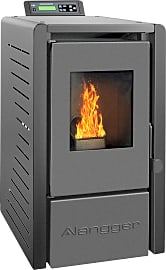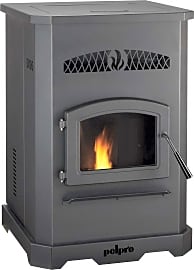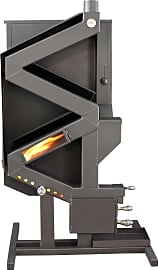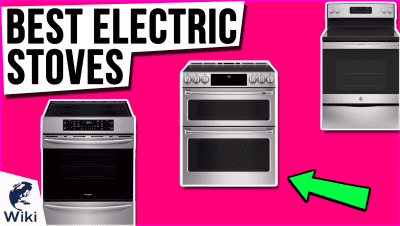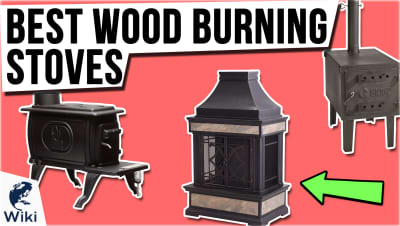The 6 Best Pellet Stoves

This wiki has been updated 44 times since it was first published in March of 2015. If you're looking to warm things up in the house without relying on gas or oil, this list of pellet stoves is an excellent place to start. By steadily feeding recycled wood from a storage container into a fire pot, they create a flame that requires little to no adjustment. And, unlike other fuel sources, pellets burn very cleanly and leave behind only a layer of fine fly ash as a byproduct. When users buy our independently chosen editorial choices, we may earn commissions to help fund the Wiki.
Editor's Notes
February 12, 2021:
It's getting harder to get your hands on some US Stove models, so we've removed one from our recommendations. It was replaced with the Langger Serenity, which isn't just good-looking, it's also about as streamlined and easy to use as they come. The Comfortbilt HP22 is right up there in terms of convenience, and though it's more expensive than the Langger, it also offers a high peak output.
On the other hand, the US Stove Company GW1949 Wiseway is still readily available, and doesn't have the same electricity requirement as many others. We also like the QStoves Outdoor because it's a good and environmentally friendly alternative to an upright propane-powered patio heater.
January 01, 2020:
While availability issues forced us to remove the US Stove 4840 from our ranking, it was durability issues that necessitated the removal of the Vogelzang VG5790 and the Pleasant Hearth PH35PS, the latter of which suffered problems with its ignition system that often left users without heat or reliable warranty service.
One of the new models we've added is the QStoves Outdoor Patio Heater, which is impressively powerful, as it's intended to combat even the coldest of winter nights. In many ways, it resembles the kind of outdoor heaters you'd see running on propane in exterior seating areas at restaurants. It also has the ability to be easily broken down and transported, which makes it an excellent choice for outdoorsy types who might want to take it with them on a camping trip or in an RV. The fact that you can adjust the height of its chimney was a big draw, as well.
Ultimately, the order here was determined by things like hopper capacity and heat coverage, which is why the rather capable Castle Serenity failed to reach any higher on our list than it did, as its 40-pound hopper proved to be among the smallest in its size class.
Special Honors
Quadra Fire Mount Vernon This model features a seven-day programmable thermostat, so you can set it to conserve energy while you're at work, and to keep you warm and toasty on your days off. It's a little on the pricey side for its maximum of 2,900 square feet of coverage, but its features and its quiet operating volume make it well worth the investment. quadrafire.com
Harman Absolute 63 If you need to heat particularly large spaces, the 3,400-square-foot coverage and multidirectional air flow of this model make it a viable choice. It features a full color touchscreen interface with exceptionally intuitive menus, as well as an attractive porcelain finish in either matte black or what the company calls majolica brown. harmanstoves.com
The Amazing Power Of Fire
This is true regardless of the climate or the flora and fauna of their surroundings.
Human fire control may have first occurred nearly half a million years ago. There is limited evidence of fired clay, cooked foods, and ancient charcoal that appears to be more than 400,000 years old, putting mastery of fire in the hands of our ancient Pleistocene ancestor, Homo Erectus. Researchers have not found enough evidence of fire control dating back this far to establish a consensus, but most in the scientific community agree that by at least 125,000 to 150,000 years ago, early humans had mastered the art of making, controlling, and using fire.
With the mastery of fire came the chance for rapid cognitive development; the human brain accounts for at least one fifth of all calories consumed by the body. Foods made easier to digest thanks to the process of cooking — not to mention the wider variety of foods safely edible thanks to cooking — made calories more readily accessible, thus made brain function more efficient and dynamic. Fire also offered early humans added protection, as it could be used to ward off animals, it provided illumination in the darkness, and of course it also gave warmth.
Wherever human beings have settled, they have found ways to make and manage fire. This is true regardless of the climate or the flora and fauna of their surroundings. Despite the standard abundance of warmth, tropical denizens use fire for cooking, safety, and the firing of clay. In the frigid climes of the Arctic, even where wood is scarcely available, humans found ways to make fire using animal fat as a fuel source.
The modern human does not need to worry about the benefit of fire in terms of evolutionary brain development, but everyone everywhere still needs to worry about a certain temperature range for safe, comfortable living. If you live in an area subject to cold weather and you are looking for an affordable, efficient way to heat your home, then consider using mankind's oldest technology, fire, in one of its most efficient formats: the pellet stove.
Why Pellet Stoves Work So Well
When loaded with the right fuel (high quality pellets, that is), a great pellet stove can achieve an efficiency rating of 90 percent. That means 90 percent of the fuel it burns is converted into heat energy that will be used to warm your home. Compare that to the Annual Fuel Utilization Efficiency, and you'll appreciate the figure all the more: many oil or gas burning furnaces can offer only 10 percent AFUE, and many older system are actually closer to a paltry 50 percent efficiency.
Pellet stoves achieve their consistent and reliable heating qualities by continually feeding their fuel from the hopper into the burn pot area. Unlike the hotter and colder cycles you will experience with a traditional wood fire that requires periodic loading of wood followed by a spike and then a reduction of heat, a pellet stove provides steady output for as long as the hopped is filled.
And as pellet stoves use either wood compressed from scraps and/or sawdust or else use recycled biomass fuels sourced from materials like food waste, pellet stoves are not only highly efficient, but are also a much more environmentally friendly heat source than burning wood.
Choosing Your Pellet Stove
There are two basic categories of pellet stoves, and it's likely that only one of the other will work for your residence (or your place of business). The first category encompasses pellet stoves that are designed to be integrated with a central heating system; these stoves are rarely aesthetically pleasing, but they're efficient and affordable to maintain after their initial purchase and installation costs.
The second type of pellet stove is often smaller, is designed to look like a traditional wood burning stove, and is intended to sit prominently in a room.
The second type of pellet stove is often smaller, is designed to look like a traditional wood burning stove, and is intended to sit prominently in a room. Both the heat and the flickering flame of this category of pellet stove will be enjoyed by everyone in the room. Both types of pellet stove usually require connection to a standard AC outlet, and they will not run without electricity provided by an outlet or by a backup battery (a large battery, at that) or a generator. Keep that in mind as you consider a pellet stove if your home is subject to frequent power outages; you don't want to be left in the cold without a backup plan when the electricity fails.
As for choosing a stove, if you need a unit that will tie into your central HVAC system, then you will have to shop more based on statistics — aka the power needed for the square footage of the property — than any other factor. Assuming you are looking for a pellet stove that will sit in a room, you can also shop based on heating capacity. Many pellet stoves can easily warm up to 1,500 square feet of space, and can serve as the only heat source for homes of this size or smaller. (Note that these stoves may not work as well for homes with several floors or that are spread out in certain floor plans.)
Also be sure to consider your potential stove's burn time. Many pellet stoves can offer hours and hours of continuous heat, with some burning for almost a full 24 hours without the need for a refill of pellets. If you live in a place that gets truly frigid in the winter, the longer the burn session, the better.


